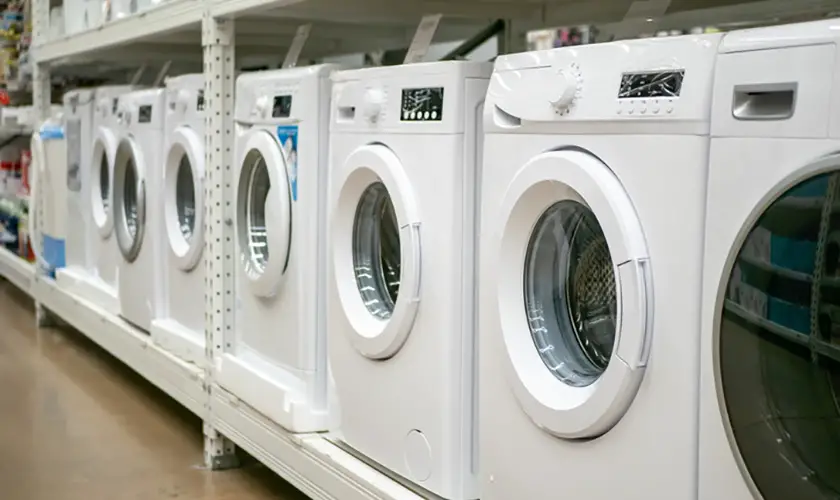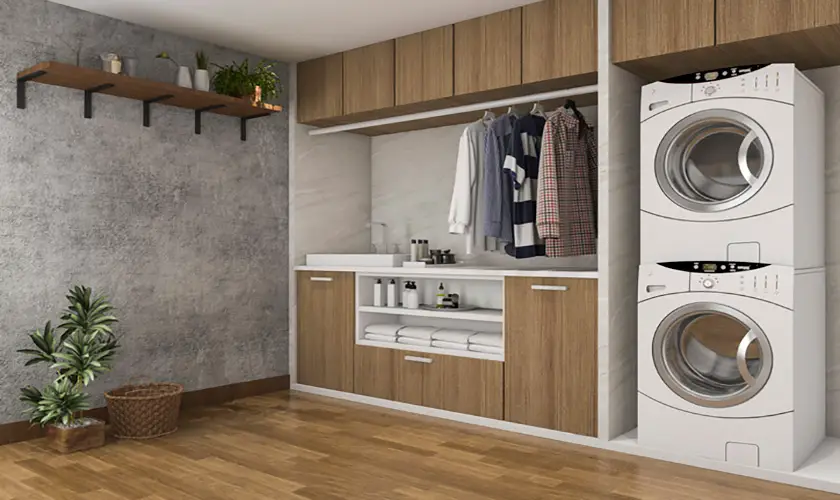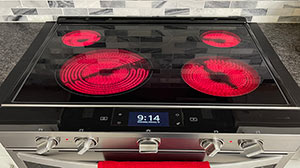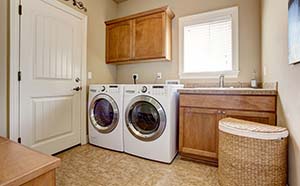
Have you ever gone to your basement or laundry room and found a huge puddle of water? Then you may have wondered if there’s something wrong with your washing machine. There could be an issue, but it might not be the problem that most people think.
Washing machine drain pans are not an IRC code requirement at this time. However, some local jurisdictions require drain pans if the washing machine is located on the second floor. A drain pan is crucial, particularly if your washing machine is above living space. A drain pan with a drain to the exterior helps avoid flooding in case of leakages or overfilling.
This article explains the purpose of a washing machine drain pan. It includes step-by-step instructions on how to install one and what you need to know about drain pans.
Keep reading to find out.
What Is The Purpose Of A Washing Machine Drain Pan?
Do you have a washing machine in your home? If so, you should know that there is a part of the appliance called the drain pan.
This section catches any water from the machine and typically leads it straight to the drainage system.
Washing machine drain pans are an extra layer of flooding protection for your home. And for that reason, they are not a must. If the piping of the entire washing machine is in proper shape and functioning as it should, you may not need a washing machine drain pan.
But what if the pipes start leaking?
At first, you may not realize the leak, especially if it is subtle. So much so that a drain pan under the machine proves quite essential. This accessory gives this water a place to settle rather than spread all over the floor. And once this water gets to a specific level, the drain pan leads the water out of the machine.
So, as much as it is not a requirement, it would be better to have one than to lack one!
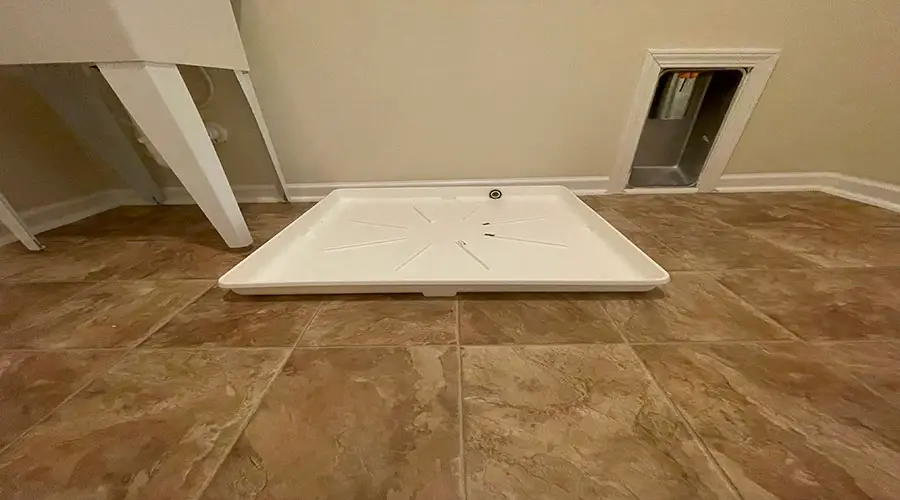
How A Washing Machine Drain Pan Works
A drain pan for a washing machine fits underneath your machine. These pans are heavy-duty, so you don’t have to worry about them breaking when they get wet.
Also, you won’t worry about them being too lightweight that they will shift around during use. With perfect placement, you’ll never have to worry about water spilling over the sides of your drain pan if you install a PVC pipe in the pre-cut hole.
Some drain pans will come with an already cut hole, while others will not. In that case, you need to drill one yourself. If you cannot do it yourself, it is best to call a plumber to help you.
Installing A Washing Machine Drain Pan
You should get an expert to complete this job with no issues. Regardless, this is the process you follow to get the washing machine drain pan in place under your device:
Step 1: Disconnect The Power And Water Supply Of The Machine
Ensure that you unplug the washing machine and empty it before you remove it from its stand. Turn off your household plumbing, including shutting off any faucets or valves connected to pipes in the vicinity of where you’ll be working on the installation.
Disconnecting hoses can sometimes take some force, so have a bucket ready for when they burst out with pressure after you unscrew them.
Step 2: Use A Dolly To Lift The Machine
The next step is to lift the front side of your washer carefully. You then proceed to insert the dolly. It would be best if you moved the machine entirely away from the wall uncovering the floor drain.
Step 3: Measure And Cut The Drain Pipe
Suppose you are replacing the old drain pan; you may use the existing pipe. But in case you are installing a new one, you need to measure and cut the pipe to fit the new drain pan perfectly.
Step 4: Fix In The Drain Pan
You proceed to fix the drain pan by installing the new pipe. If it does not have one, drill it to fit the pipe.
Step 5: Place The Washing Machine On The Pan
The last step is placing the machine on the drain pan. You use a dolly and work carefully to lower the machine on the pan. It must be a perfect fit; otherwise, spilling may become a regular occurrence.
When done with step five, reconnect the washing machine to all the power and water supply inlets. It would help if you used a wrench to ensure that the hoses are secure. It would help if you also turned all the valves on. You must be observant for the first few washing sessions for any leaks.
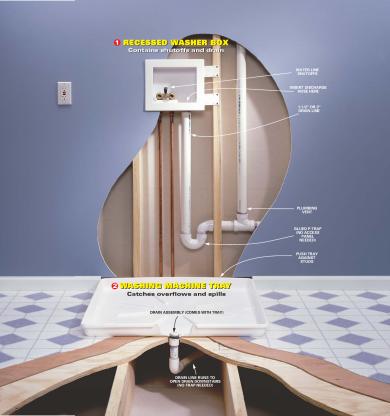
How To Cut The Drainpipe Hole On Your Drain Pan
The best way to get a new pan installation is with the help of your screwdriver and power drill. Here are the steps in cutting a drainpipe hole for your drain pan:
1. First, find where there’s an existing hole before you start cutting through it.
2. Once you’ve found one, take out the cut-out.
3. If the pan doesn’t have any holes pre-made, go ahead and use your 1″ diameter hole saw kit to cut into the drain at just about 3 inches from either side.
How Do I Get My Washing Machine Drain Pan To Work Optimally?
Here are some of the maintenance practices you may have to do to service your washing machine pan. This ensures that it works perfectly.
Clean The Drain Pan
The best way would be with a wet or dry vacuum because they can suck up standing water in an instant. And if you don’t have one of those handy tools, then old clothes or towels will do the trick as well.
To keep smells at bay, make sure to clean the washer’s drain pan thoroughly. This is one of those jobs that often gets overlooked, but it can provide a fresh start for all your clothes in good condition and eliminate any lingering odors.
Sprinkle baking soda on your drain pan before pouring some vinegar into the water. These two ingredients work together as a natural enzyme cleaner. They neutralize bad smell molecules with their strong alkaline properties while gobbling up smelly air particles too.
Then let this mixture sit overnight, so it has time to do its thing before washing away the following day or evening.
Fix Cracks And Breaks
Another main concern for the maintenance of the washing machine drain pans is cracks and breakages. It is, therefore, essential to make sure it stays in good shape.
So every six months or so, you should inspect for any cracks with an eye-level view and walk around looking for wet spots near the drains. If you notice wet patches on the floor where the machine stands, then there is a crack or breakage that you need to fix.
Drain Pan Pipe Clogging
Yet another issue that may arise with a washing machine drain pan is clogging. You can avoid the woes of a clogged drain pan by regularly inspecting your drainage system.
Notice any changes in sound, color, or smell? If you answer yes to these questions, it’s time for an inspection.
Why Do You Need A Washing Machine Drain Pan?
Many homeowners opt not to get their washing machine a drain pan, but it is an intelligent precautionary move. Here are some of the reasons why a washing machine drain pan may be necessary.
They Protect Your Home From Flooding Accidents
Drain pans under washing machines are an affordable way to protect your home and floor against floods. The water is collected in the drain pan, which you can then safely pour out of your house without any mess on either side.
They Protect The Flooring
A drain pan also protects the floor beneath from condensation that can lead to water buildup. When this happens, the floor might start chipping if it is a cement floor.
And if it is wooden, warping and rooting is the likely event.
To Mitigate The Growth Of Mold And Mildew
When a surface is constantly damp, there is a likelihood that mold will thrive. Mold exposure is no picnic for anyone. Allergic or not, it can irritate your eyes, nose, and throat. It also has the potential to cause more severe reactions in people with asthma.
So when you provide the perfect breeding ground with water from a faulty drain pan, you are putting yourself and your family in danger.
To Keep The Machine In Top Shape
Water is beneficial within the household, but when you do not adequately guide it, it causes havoc. And one of those things that it facilitates is rotting and eroding off of the washing machine. If the bottom of the washing machine is constantly wet, the machine parts that are in direct contact with this moisture rot.
If you do not fix these issues and the damage gets to the electrical wiring of the machine, it stops working—worse off, posing dangers like electric shocks or even life-threatening electrocutions.
To Avoid High Home Repair Expenses
A simple and easy leakage issue from your washing machine could potentially cost you thousands of dollars. And this is because these leakages cause far more damage than the eyes can see.
Take, for instance, when the water seeping into the floor from leakages from your washing machine soaks into the floor. After a while, you will notice parts of your floor and walls with mildew growing. From face value, it seems like a one-day job. But an expert will assess the situation and gauge the level of damage.
If you are lucky, a drying session might be enough. But when this damage is beyond that, it starts affecting the stability of the wall and home; you may have to bring some walls down, which is very costly.
Hence, when you compare the price of getting a new drain pan to fixing a wall, the first option seems like the best you have.
Safety Tips When Using Washing Machine Drain Pans
This section covers some of the safety steps you need to adhere to when dealing with washing machine drain pans:
Before Installation
- Use the setup manual and follow the steps one after the other. Ensure that you unplug any power and have nothing inside the washing machine.
- Seek a helping hand. If you are doing it as a DIY, get a friend or two to help. But if you opt to get a professional team, they will mostly come as a unit of two or more people.
During Installation
- There are several ways to lift a washing machine during the installation of the pan. The first is the traditional lifting of the machine, where two people lift the machine from the ground. Others are using forearm or waist straps or using ramps. You go with what suits you best.
- When lifting, lift with your legs and not your back.
After Installation
- Ensure that the washer is on the same level as the drain pan. You should adjust if you must.
- Use anti-vibration pads at the bottom of the drain pan. This is to reduce the vibrational movement of both the machine and the drain pan.
- Ensure that you have connected every inlet and outlet securely.
Where Does The Drain Pan Lead The Water?
Drain pans help prevent flooding while you wash your clothes. They usually channel water to a floor drain. A washer pan connects with the drain-waste-vent system via a fitting and PVC pipe. This is so that you can remove any excess fluid quickly for easier cleaning.
What Is The Cost Of Installing A New Washing Machine Drain Pan?
The average cost is around $85 to $150, depending on a few things. Here is a list:
Size
The bigger the machine, the bigger the drain pan you will need. If you get a smaller drain pan, it will not do its job like it is supposed to.
Material
You will find drain pans in various materials in the market. The most affordable ones are the plastic drain pans, while the costly ones are the stainless-steel kinds. There is also galvanized steel, cold-rolled steel with a powder finish, natural rubber, and aluminum.
Durability
The modern plastic ones have an expected service of 10-15 years. In contrast, the stainless steel and the rest with rust resistance can last longer with proper maintenance.
Brand
One of the other factors that will affect the pricing is the brand you choose to go with. For instance, a Vbenlem stainless steel pan goes for about $119, while an Oatey drain pan that is plastic goes for $24.
How To Ensure That Your Drain Pan Serves You the Longest
Despite the cost you bought it with or the material the drain pan is made of, there are certain things you need to do to ensure that it serves you the longest. Here is a list of some of those things:
- Clean the drain pan regularly. Make it a habit to clean the pan every six months or so.
- Fix any cracks or breakages you notice right away. This is to mitigate any leakages that water will seep right through and find its way to the floor and walls of your home.
- Replace a broken pan. If you cannot fix any crack or breakage, it is wise to get a new pan and replace it.
Additional Tips To Mitigate Water Damage To Your Floors, Walls, And Washing Machine
Even though the drain pan can help you keep the machine, floor, and walls dry, there are still a couple of things you need to do. You may have noticed a water pool on the floor and found that the pan is not the issue.
So, where could the possible problem be? Here are some suggestions:
Leaking Pipe
If either outlet and inlet pipes have a leakage, that can amount to thousands of damage. And the solution is to assess the pipes and find the leaking part.
If it is small, seal it, but replace that part of the pipe or the entire roll if the hole is big.
Unmaintained Washing Machine
If your machine is constantly acting up by leaking or causing wet messes, it may be because you do not maintain it as you should.
In that case, ensure that you clean the machine regularly, load the machine appropriately and add the right amount of detergent. Replace any broken parts and level them properly.
What Is The Code For Washing Machine Drain?
As a homeowner, you should be aware of the plumbing codes enforced by your local jurisdiction. For instance, there is an allowance for washing machine drain sizes to vary from 2 inches to 4 inches and higher in some jurisdictions.
The standard P-trap height, according to code, varies between 6 and 18 inches off the floor. Also, pipe heights should be ranging from 18 – 30 inches depending on what type of washing machine.
All these must be under your state’s Uniform Plumbing Code.
Take Away
The truth is, drain pans on washing machines are not a must. But they are required for safety reasons by the local code enforcement agency in most jurisdictions and can help mitigate leakages and flooding.
Contact experts who will guide you if you’re ready to get started with your project. They are the best reference point if you want more information about what products will be best for your needs. In conclusion, it is better to have a washing machine drain pan than to lack one.


